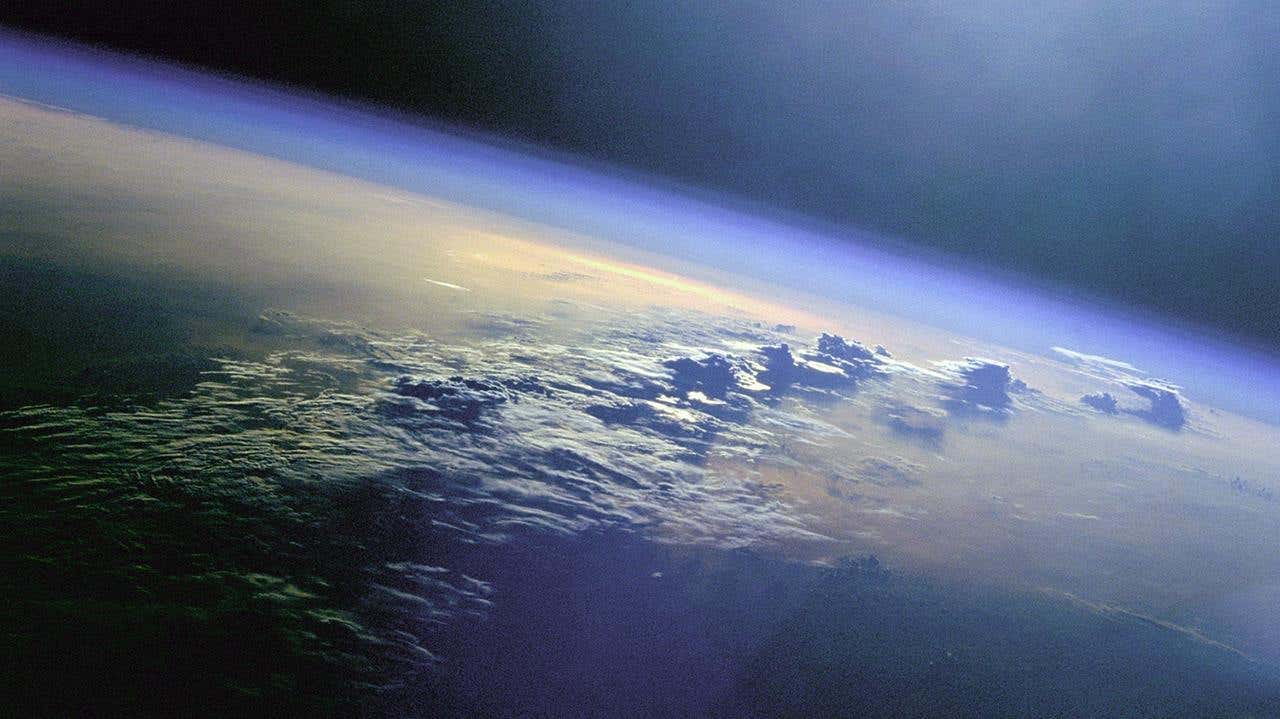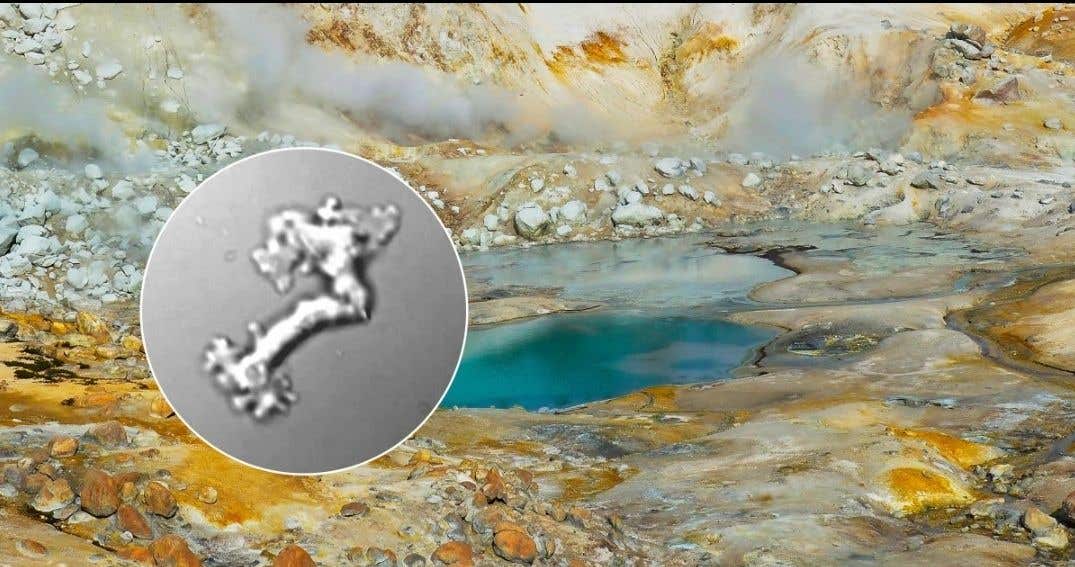What space dust can teach us about Earth’s climate history
Fossil micrometeorites reveal Earth’s past CO₂ and atmospheric oxygen with unmatched precision, reshaping climate history research.

Cosmic dust turned to glassy spheres is rewriting the story of Earth’s ancient air, offering sharp insights into past CO₂ and global life. (CREDIT: NASA)
For billions of years, Earth has been bombarded by tiny particles of rock and metal from space. When these extraterrestrial specks hit the upper atmosphere at hypersonic speeds, they burn and melt into glowing trails—what you know as shooting stars. But what’s left behind isn’t just dust. Some of these space travelers transform into small, spherical particles called cosmic spherules.
Most of these particles are smaller than a grain of sand, but a special subtype called I-type cosmic spherules holds extraordinary value. These rare, iron- and nickel-rich spheres don’t just tell us about the cosmos—they tell us about Earth’s ancient air.
Tiny Spheres, Big Clues
I-type spherules form when metallic micrometeorites completely melt during atmospheric entry and undergo full oxidation. Their iron and nickel content reacts with oxygen in the air, creating minerals like magnetite and wüstite. That oxygen doesn’t come from the meteorite itself—it comes from Earth's atmosphere. And that’s what makes these spheres so powerful. They trap within them a snapshot of Earth’s atmospheric oxygen from the moment they formed.
Because these particles often survive long after falling to Earth, some even for hundreds of millions of years, they act like miniature time capsules. If you recover them from ancient sedimentary rock, they let you measure the precise isotopic composition of oxygen from long-lost eras. In essence, they become tools to reconstruct what Earth’s air was like tens to hundreds of millions of years ago.
Fossils from Space as Climate Proxies
A team of scientists from the University of Göttingen, the Open University, the University of Pisa, and Leibniz University Hannover has developed a breakthrough method to analyze these particles. Their work focuses on the triple oxygen and iron isotope compositions of fossilized I-type spherules, unlocking details about the atmosphere during periods like the Miocene (about 8.5 million years ago) and the Late Cretaceous (around 87 million years ago).
This method, now published in Communications Earth & Environment, allows researchers to read the chemical signatures inside these spheres and reconstruct ancient CO₂ levels and global primary production. That means understanding how much carbon dioxide was in the air—and how much life on Earth was photosynthesizing—at the time these particles formed.
Related Stories
- First direct evidence of how Mars lost its thick atmosphere and water
- Saturn's largest moon Titan has a baffling atmosphere that wobbles and spins like a gyroscope
- Astronomers capture first 3D view of an exoplanet’s atmosphere and climate
Lead author Dr. Fabian Zahnow, formerly of Göttingen University and now at Ruhr University Bochum, explained: “Our analyses show that intact micrometeorites can preserve reliable traces of isotopes over millions of years despite their microscopic size.”
This technique relies on measuring anomalies in oxygen isotopes, particularly a rare isotope called oxygen-17. Atmospheric O₂ has a distinctive triple oxygen isotope signature that reflects the balance between photosynthesis, CO₂ levels, and reactions in the stratosphere.
The more CO₂ in the upper atmosphere, the more depleted oxygen-17 becomes. When plants photosynthesize and release fresh oxygen, it dilutes the anomaly. By measuring the amount of oxygen-17 in these tiny spheres, scientists can estimate how much CO₂ was in the air and how active Earth’s biosphere was.
Unlocking the Past from Earth to Sky
The research team analyzed fossil cosmic spherules from sedimentary rocks dating from 411 million to 7 million years ago. These rocks covered a wide span of Earth’s history, from the Silurian to the Miocene. The spheres themselves were less than 200 microns across—about twice the width of a human hair.
To get precise readings from such small particles, the scientists used new techniques that allow the measurement of isotopic compositions with extraordinary accuracy. This included a non-destructive screening method to detect if the spheres had been altered by processes after landing—something that could skew the data.
These post-entry changes matter. While the spherules may look pristine, their isotopic signatures can be distorted by long exposure to water, heat, or chemical changes in the soil. That’s why the team emphasized rigorous screening to ensure only the best-preserved samples were used.
They discovered that while some spherules had been geochemically altered, others had maintained their original atmospheric signatures. The challenge is finding the unaltered ones. Still, when done carefully, the isotope analysis of fossil spherules proves competitive with other methods used to reconstruct ancient CO₂ levels, such as studying leaf stomata or chemical weathering patterns.
Better Than Earth-Bound Methods?
So how does this space-based climate tool compare to traditional ones? One advantage is that the oxygen in these spheres comes entirely from Earth’s atmosphere, making them a direct recorder of atmospheric composition. In contrast, proxies like marine sediments or fossilized plants offer more indirect clues.
Another bonus: I-type spherules are surprisingly resistant to weathering. Unlike other micrometeorites that may break down or lose their structure, these iron-rich spheres can survive in sedimentary rock for billions of years. In fact, they’re often the only micrometeorite type preserved in very ancient rocks.
Still, the technique isn’t without challenges. Most fossil spherules are extremely small, and the equipment needed to measure their isotopic composition is both sensitive and specialized. Also, the signal you’re measuring—those subtle isotope shifts—is tiny. Precision is everything.
What This Means for Climate Science
As Earth’s climate continues to shift, scientists are looking to the deep past to understand how the atmosphere has changed over time. By measuring the isotope fingerprints in these microscopic space rocks, researchers now have a new way to track the history of CO₂ and global biosphere activity.
These findings don’t just improve our understanding of past climates—they also help refine the models used to predict future change. The tiny I-type cosmic spherules, created in fiery journeys through Earth’s upper atmosphere, now serve as tools for tracing the ancient rhythms of carbon and life on our planet.
And their message is clear: if you know where to look, even the smallest relic from space can tell a very big story.
Deeper Definitions
What Are Triple Oxygen Isotopes?
Oxygen atoms come in several forms, called isotopes. Most have 16 neutrons, but some have 17 or 18. The ratio of these isotopes in atmospheric O₂ depends on how oxygen is made and broken down. Triple oxygen isotope analysis tracks the small variations in all three isotopes—16O, 17O, and 18O—to reveal how the atmosphere has evolved.
Why Iron Isotopes Matter Too
While oxygen tells you about the atmosphere, iron gives a clue about how much material was lost during atmospheric entry. Iron isn't affected by atmospheric exchange like oxygen is, so its isotopic ratios serve as a check—telling you how much evaporation happened as the micrometeorite melted.
The Power of Cosmic Climate Archives
By combining oxygen and iron isotope data, researchers can correct for entry effects and get a clearer signal of past air. That’s why this method is so promising—it opens a fresh window into Earth’s climate story that’s been locked in tiny space particles for eons.
Note: The article above provided above by The Brighter Side of News.
Like these kind of feel good stories? Get The Brighter Side of News' newsletter.



